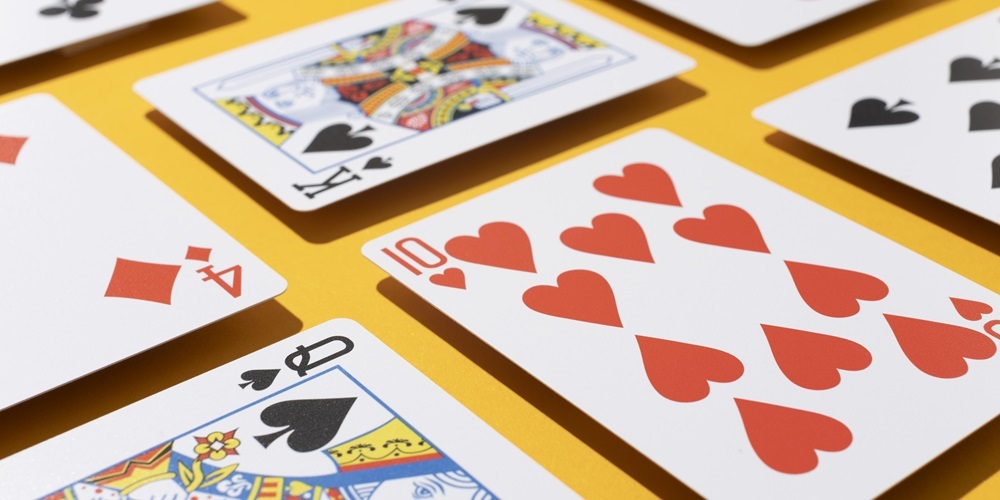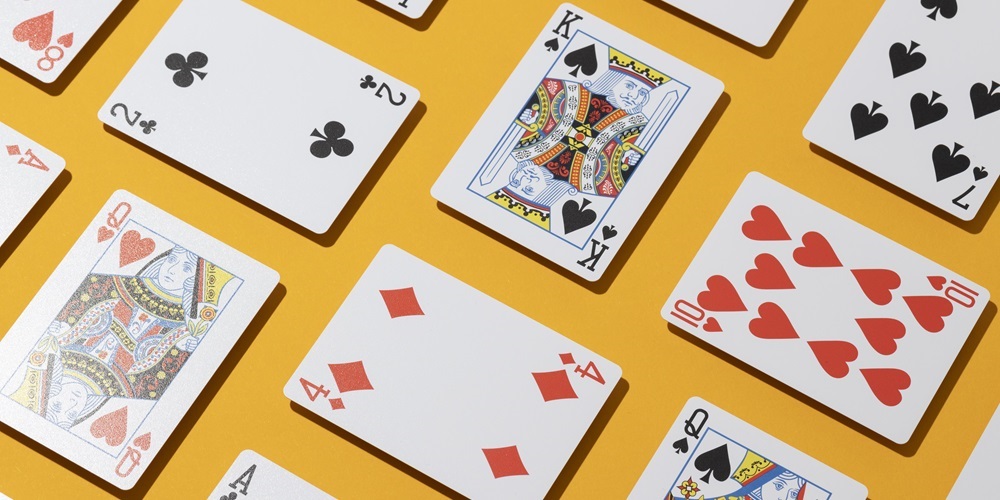One of the basic characteristics to understand poker is the card rank. In poker, that hierarchy is everything because it determines the relative strength of hands.
Understanding this hierarchy in poker is essential for any poker player, as it forms the basis for evaluating the quality of a hand and making strategic decisions during play, so let’s get to it.
Card rank in poker: what is it?

Card rank in poker is used to determine which hand is the winner in a showdown.
Generally speaking, card combinations are ranked in descending order, from the strongest hand to the weakest. Here is the poker card hierarchy, ranked from highest to lowest:
– Royal flush.
o Example combination: A♠ K♠ Q♠ J♠ 10♠
o Description: it is the most powerful hand in poker, there is no doubt about it. A straight flush formed by the highest cards of the same suit. The hand must be presented in that order to be considered valid, with the ace at the top of the combination. Otherwise, it could not be considered a royal flush.
– Straight flush.
o Example of a combination: 6♥ 5♥ 4♥ 3♥ 2♥
o Description: like the previous hand, this is a combination of five cards of the same suit in successive numerical order. It is the strongest hand, if we disregard the Royal version. In any poker card hierarchy, it tops along with the royal flush the ranking of strongest hands.
– Poker.
o Example of combination: J♦ J♣ J♥ J♠ 3♦
o Description: it is the hand that gives name to the game, and which is composed of four cards of identical value and a kicker, the loose card is the kicker. Mistakenly many think it is the strongest hand in the poker card rankings, when in fact a straight flush beats it.
– Full House.
o Example of combination: K♠ K♥ K♦ 9♥ 9♠
o Description: it is the hand consisting of three cards of the same value, and two others of equivalent value, i.e. a three of a kind and a pair. After straight flush and poker, it is the strongest hand in the entire poker ranking. Cards such as those forming this combination are easy to remember: three of a kind and two identical, that is, a three of a kind and a pair give a full house.
– Flush.
o Example of combination: Q♠ 8♠ 5♠ 4♠ 2♠
o Description: a hand consisting of five cards of the same suit. They must be non-consecutive cards. If they were consecutive, we would speak of a straight flush, but this is not the case. Note the poker ranking: both the flush and the straight are not too strong compared to others on the table.
– Straight.
o Example of combination: 8♣ 7♠ 6♦ 5♠ 4♥
o Description: the straight is formed by five cards of consecutive value, but of different suit.
– Trio.
o Example of combination: 7♠ 7♥ 7♦ 5♣ 3♠
o Description: three cards of the same rank form the trio. It is accompanied by two cards of unequal value.
– Double pairs.
o Example of combination: 5♣ 5♦ 4♠ 4♥ 2♦
o Description: two different pairs included in the five cards that form the hand give rise to double pairs. The fifth card will be the kicker.
– Pair.
o Example of a combination: Q♥ Q♠ 9♦ 3♣ A♦
o Description: two cards of equivalent value together with three cards that do not result in any higher combination result in a pair. This is among the worst choices, and second on the list of poker hands in ascending order.
– High card.
o Example combination: Q♦ J♠ 7♥ 4♠ 2♣
o Description: it is the worst possible alternative, whatever the order of hands. In poker, high card is the same as having nothing because we are talking about a combination of cards that makes it impossible to form any minimally competitive hand.
Card rankings in poker: what to consider?

Card rankings in poker are not just based on their face value, but on how they combine to form winning hands. Here are some key aspects to consider when evaluating card rankings in poker:
- Face value. Cards in poker have a face value that goes from lowest to highest. Something basic to establish the hierarchy and that must be taken into account when, above all, establishing the kicker.
- Clubs. Although the suits (hearts, diamonds, clubs and spades) play an important role in determining whether a hand is a flush or a straight flush, within the same rank, the suits generally have no relevance. This means that, for example, two pairs of cards of the same rank and suit have the same value as two pairs of cards of the same rank but different suits.
- The kicker. In tie situations, the kicker becomes a crucial factor. The kicker is the highest card outside the main hand and is fundamental to point out the winner of a hand in a technical tie situation.
- Card combinations. The strength of a poker hand is based on how the cards combine to form specific patterns. It is critical to understand the different combinations of hands and to recognize when one hand trumps another in terms of rank.
- Tells at a glance. In addition to knowing the card hierarchy, it is essential to observe your opponents and their playing patterns. The ability to read your opponents improves your decision making. It’s not just about having cards of such and such value or suit: it’s about playing with your cards and those of the player opposite you.
- Position. The position at the table also influences the evaluation of the cards. Being in a later position gives you more information about the decisions of the previous players, take advantage of it.

